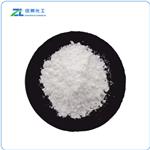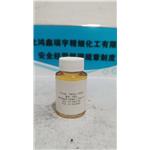Ceramide AP (CER [AP]; AP stands for α-hydroxy-N-stearoylphytosphingosine) belongs to a larger group of ceramides that are naturally occurring, long chains of lipids (fats) in the skin. To put it into perspective, the skin’s general composition of ceramides is around 50%; of that, 16% of those ceramides are of the AP variety. CERs are sphingolipids that contain a sphingoid moiety (which can be sphingosine (S), dihydrosphingosine (D), phytosphingosine (P) or 6-hydroxy-sphingosine (H)), linked with a long-chain FFA moiety (which can be nonhydroxy (N), α-hydroxy (A) or ester-linked ω-hydroxy (EO)) through an amide bond. Research indicated that CER [AP], with four hydroxyl groups on its head group, can form super stable membranes through strong hydrogen bonds. It has also been shown to be antiproliferative and proapoptotic in numerous cancer cell types in vitro. Therefore, administration of CER [AP] to the skin might help to restore the barrier function of aged and affected skin[1–2].
ChEBI: N-(2-hydroxyoctadecanoyl)-4-hydroxysphinganine is a phytoceramide in which the ceramide N-acyl group is specified as 2-hydroxyoctadecanoyl
Naturally occurring in the skin, Ceramide EOP, also known as ceramide 1, is part of the extracellular matrix that consists mainly of lipids; these waxy molecules are found between the skin cells, resulting in them playing a vital role in keeping the skin surface healthy and hydrated. Over 340 specific species of ceramides were found, and ceramide EOP was the first to show decreased levels of ceramides to weaken the barrier, making skin more vulnerable to external stressors. More specifically, a decline in ceramide AP has been linked to skin conditions such as eczema and psoriasis. Topical application of ceramide AP?via skin care formulas can help fill this gap and strengthen the skin’s barrier?against external stimuli.?Generally, ceramides?work best when combined with other replenishing ingredients like fatty acids and cholesterol. These lipid mixtures work in multiple ways to improve skin’s hydration, texture, and suppleness. Ceramides within the skin also play a vital role in maintaining skin health since they signal other processes that keep things orderly.
[1] Fitsum F. Sahle . “Polyglycerol fatty acid ester surfactant–based microemulsions for targeted delivery of ceramide AP into the stratum corneum: Formulation, characterisation, in vitro release and penetration investigation.” European Journal of Pharmaceutics and Biopharmaceutics 82 1 (2012): Pages 139-150.
[2] Fitsum F Sahle. “Lecithin-based microemulsions for targeted delivery of ceramide AP into the stratum corneum: formulation, characterizations, and in vitro release and penetration studies.” Pharmaceutical Research 30 2 (2013): 538–51.



